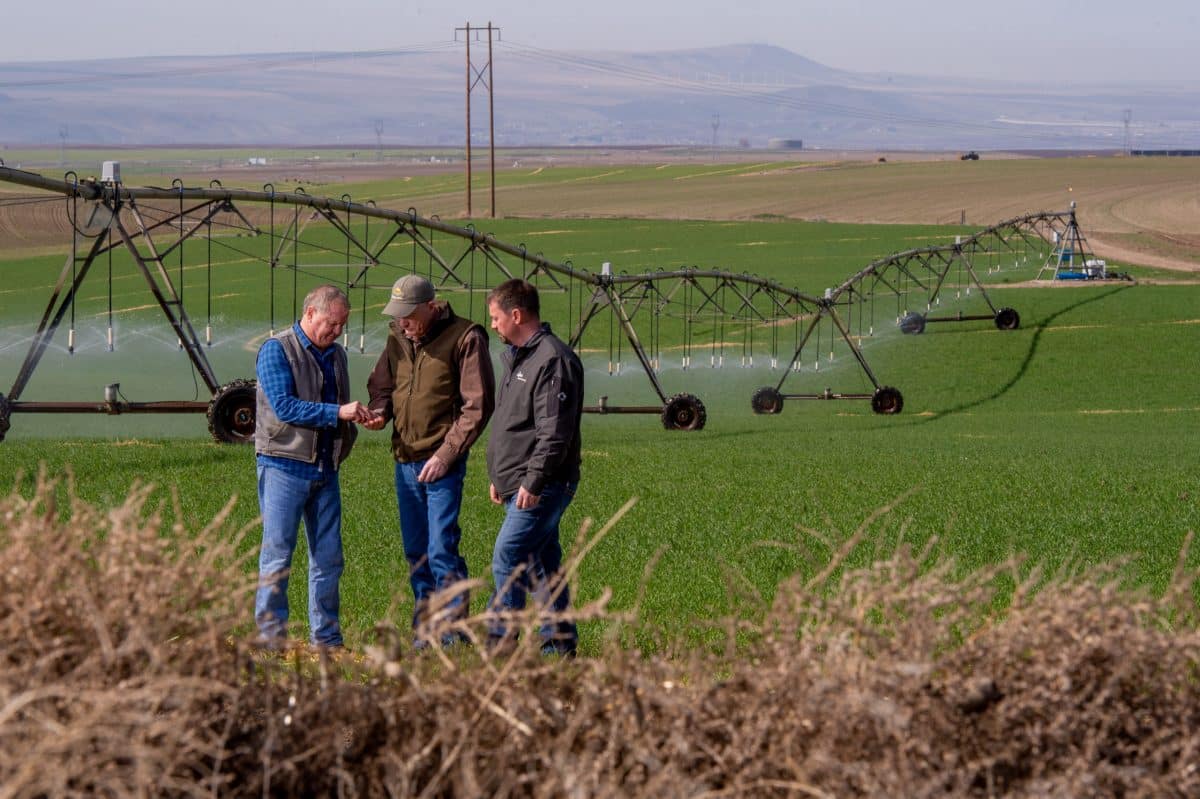When you’re growing potatoes for folks who know a thing or two about making French fries, you need to be on top of your game. That’s why Steve Paget, manager of Simplot’s Grandview Farms near Burbank, Wash., and Certified Crop Advisor Jack Jensen with Simplot Grower Solutions, use tissue and soil tests weekly to monitor and adjust the crop’s nutrient needs.
Simplot Grandview Farms is an intensive 15,000-acre operation in Washington’s Columbia River Basin. In addition to 150,000 tons of potatoes, crop rotations include 42,000 tons of sweet corn for processing, 400,000 bushels of fall-planted wheat, 1,200 tons of dry edible beans, 20,000 tons of alfalfa hay, 4,000 tons of Timothy hay, 1,500 tons of buckwheat and 3,000 tons of triticale for silage.
Nutrient management can be complicated with such a diverse cropping system, which is why Paget and Jensen work closely together to sample and analyze nutrient needs. “Potato is our primary crop, and then we grow all the rotational crops that follow the potato cycle,” Paget says. After potato harvest, soil samples help determine which rotational or cover crop is fall-planted and what nutrients are needed.
The farm incorporates 30,000 tons of composted cattle manure from a nearby Simplot feedyard. Soil tests determine where manure application is appropriate, Paget says. That’s typically in areas where they see declining phosphorus and potassium levels, nutrients that manure readily supplies.
Manure is applied following potato harvest in the fall on fields to be planted to alfalfa or wheat. “We’re paying close attention to our crop rotation by using deeper-rooted crops (like alfalfa and wheat) following shallower-rooted crops (like potatoes), which tends to bring deeper nutrients back to the surface,” Jensen says.
The pair watch the growth stage of the crops very closely. “That’s very true with potatoes because we have strict harvesting timelines we have to meet for the quality parameters with the processing plant,” Jensen says.
A significant number of nutrient applications on the potato crop are made through fertigation. That allows the nutrients to be applied at the right rate and at the precise time the potato crop needs them. In addition to weekly tissue and soil tests, satellite imagery helps monitor crop nutrient needs.
GPS precision farming guides the entire process. GPS-guided planter bands allow for precise seed and nutrient placement with less soil disturbance. For potatoes, GPS-guided tractors apply liquid phosphate fertilizer in planter bands on both sides of the potato piece seed at planting.
The 4R proof is in the 2020 potato crop. It took 9 pounds of N, 6 pounds of P, 7 pounds of K and 2 pounds of S on 150,000 tons of potatoes. According to Jensen, current nutrient applications are at least 15 percent more efficient than 10 years ago with improved yield and quality.
And quality is the name of the game when growing processing potatoes. Large customers like McDonald’s have very high specifications for making high-quality potato products.
“Methodical timing is essential when managing our crops,” Paget says. “The 4Rs of Nutrient Stewardship provide a framework to maximize production while respecting our resources.”
Best Practice Management
- Use nitrogen stabilizer for liquid and dry fertilizers
- Use urease inhibitor
- Account for nutrient credits from cover crops to determine nutrient application rate
